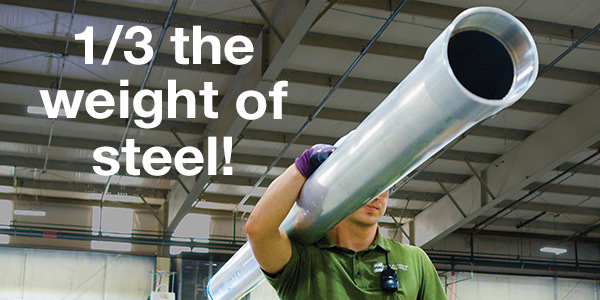by Vishnu Shastry, Optical Engineering Manager at Dialight
There’s been a lot of buzz in the industrial LED lighting market over lumens per watt (LPW) with manufacturers working overtime to ramp up fixture efficacy and compete on this new metric. As the most efficient lighting source on the market, LED already provides substantial energy and cost savings compared to conventional HID fixtures like HPS and fluorescents. In their bid to market “more is better,” manufacturers have turned to LPW as a key product differentiator to impress buyers.
Unfortunately, what most manufacturers aren’t telling buyers is that a high LPW often comes at the cost of significant tradeoffs in other critical areas of fixture performance. The truth is, that while a fixture rated for 200+ LPW sounds great on paper, it also comes with several drawbacks, sacrifices and headaches. For example:
Optical control and comfort. In order to maximize LPW, some manufacturers aim to eliminate anything that might “steal” from lumen output by omitting fixture lenses and reflectors. This creates several problems.
First, the lack of a lens exposes the LEDs and other components to the risk of damage from environmental hazards, such as dust, moisture or impact. What good is an efficient fixture if it’s easily broken and requires constant maintenance? Second, the lack of lens and/or reflector eliminates the optical control that places the light where it’s needed most—on the floor and work surfaces, for example. Instead, the light is sprayed all over the walls and other areas where it’s not needed, wasting lumens, energy, and money, hence detracting from the supposed efficiency.
Finally, the lack of optical control can also create an overwhelming glare that makes the fixture uncomfortable and difficult to work under. This can hinder workers’ productivity, which diminishes overall facility efficiency, offsetting any gains from the high LPW.
Color uniformity and color rendering. One of the clear advantages of LED lighting over conventional HID, especially HPS, is its superior color rendering capability. With a near-daylight CRI of 80+, LED provides better visual acuity and enhances safety by enabling workers to clearly recognize color-coding on warning placards, wiring and other indicators that rely on color to communicate danger.
But in order to enhance LPW, some manufacturers will lower the CRI and amplify CCT, eliminating the color rendering benefit and thus causing glare, eyestrain and discomfort. This can impact safety as employees are unable to clearly distinguish colors and find themselves squinting, which hinders visual clarity. In this case, as LPW goes up, light quality and comfort goes down, leaving many buyers unsatisfied with their investment.
Fixture size, cost and life. In order to maximize LPW, manufacturers can theoretically choose one of two routes. They could overdrive the LEDs with higher amperage to increase lumen output, which could then cause two problems: first, it detracts from the energy efficiency of the fixture, and it produces excessive heat which can damage critical fixture components. This can shorten the life of the fixture, eliminating the long-life benefits of LED technology.
Alternatively, they can choose to underdrive the fixture, reducing energy consumption. But in order to achieve the same lumen output, they then must increase the number of LEDs, which adds substantially to the size, weight and cost of the fixture. The result is a high LPW light that’s too large and too expensive to fit the specs or the budget.
Clearly, all of these tradeoffs mean achieving a high LPW requires sacrificing overall fixture performance and longevity, which is why most high LPW fixtures carry a minimal manufacturers’ warranty. For buyers, that means as LPW goes up, ROI and protection for their investment goes down.
Don’t make the mistake of getting caught up in the LPW loophole. When choosing an industrial LED fixture, focus on these three critical factors that make up the industrial LED trifecta:
Light efficacy. Choose a fixture that distributes the maximum amount of usable light where it’s needed and at an efficient energy cost. You’ll want a fixture that qualifies for DLC standard or DLC premium enhanced energy rebates, but that also provides the precision optics and lumen maintenance that ensures efficient, effective and comfortable light for the application.
Light quality. LED lighting delivers a near-daylight-quality, uniform light that provides superior color rendering, visual acuity and safety compared to conventional HID sources. Don’t sacrifice these advantages to save a few pennies on electricity—the huge tradeoff is not worth the meager savings. Choose an LED product with a high CRI and comfortable CCT that provides the quality, color and clarity you want in a reasonably efficient fixture.
Cost. While this is often the most important factor in the purchase decision, choosing the cheapest fixture can mean a huge sacrifice in quality. To offset the cost of the added LEDs needed to increase LPW, some manufacturers opt for cheaper, lower-quality components, which reduces reliability and lumen maintenance. That means the fixture that’s less expensive today may cost more to maintain and replace down the road. Instead of buying the highest LPW at the lowest cost, consider the long-term maintenance and replacement expense. Choose fixtures that will last and lower your total cost of ownership.
Upgrading to new, high-efficient LED lighting can be a sizeable investment, so it’s only natural to want to make sure you’re getting the best value for your money. But in order to get the greatest overall lifetime value, buyers must consider LED fixtures as a complete system and evaluate options for all-around efficacy, efficiency, quality and lifetime performance of the fixture rather than just lumens per watt.
For more information on Dialight, please visit www.dialight.com.
Vishnu Shastry is an optical engineering manager at Dialight.






